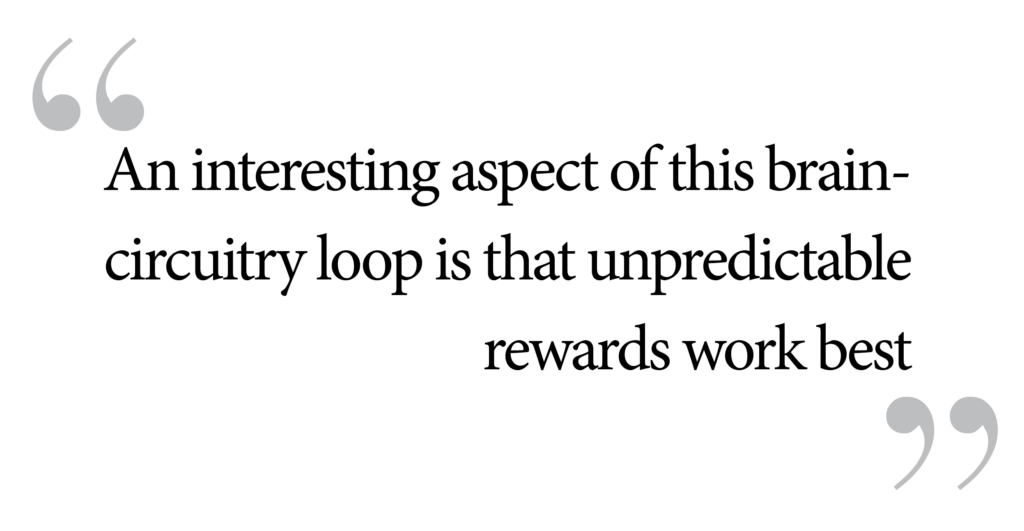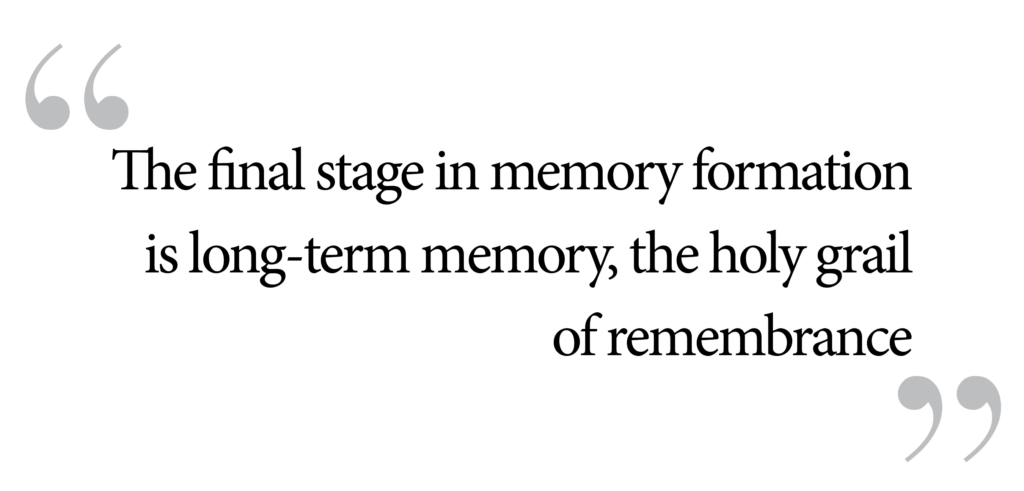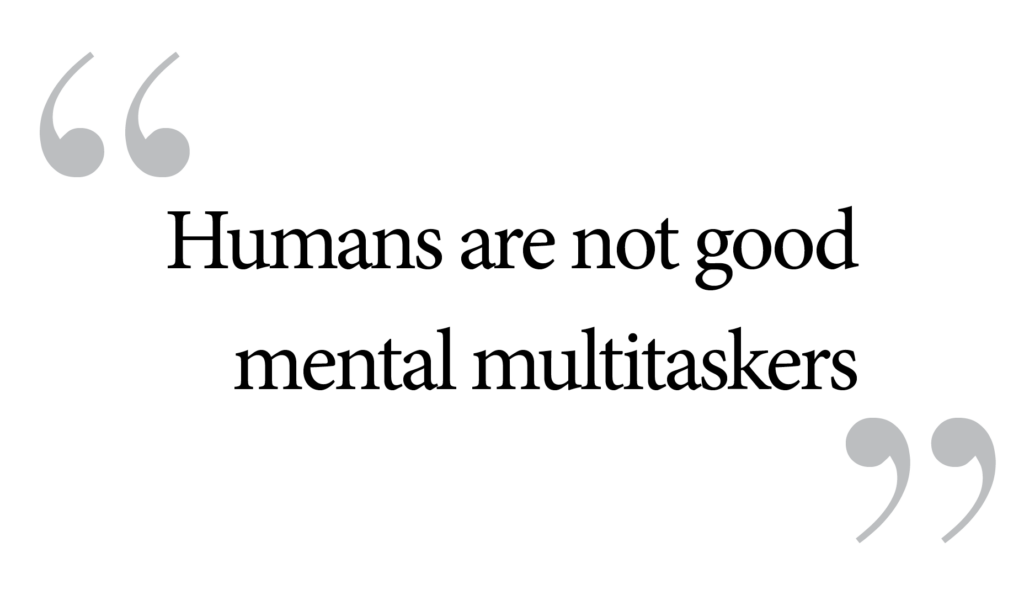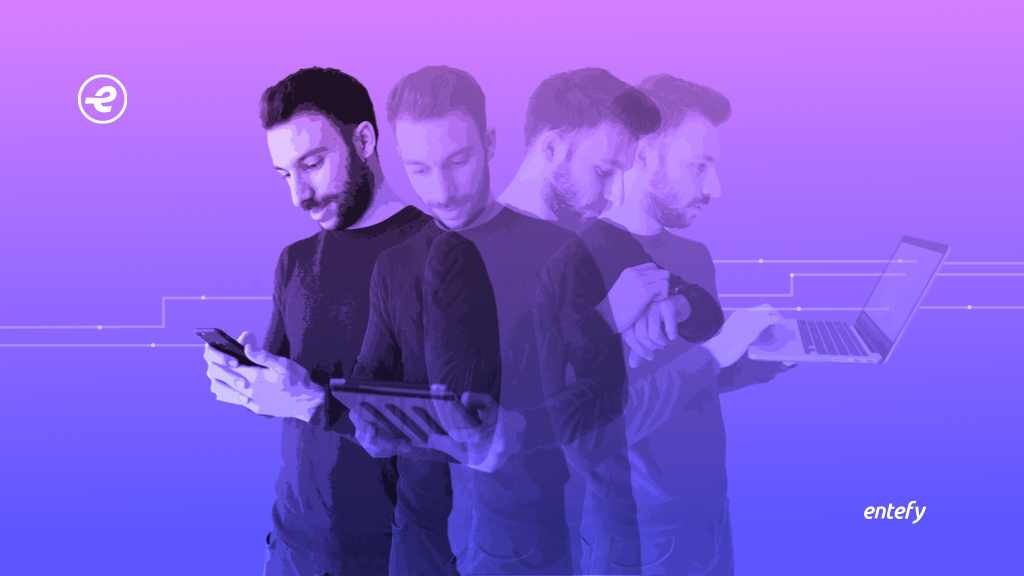We’ve all experienced that itch you get during those in-between moments waiting for an appointment or riding a bus. The one that has you reaching for your mobile device to flick through social media feeds in search of something mentally stimulating.
Social media feeds can be a perfect way to pass time discovering new information from sources we trust and admire. However, if we’re not careful, repeatedly revisiting those feeds is also perfectly suited to driving us into what could be called an information addiction. Because that “itch” runs on the same mental machinery that leads us to overindulge in anything, from exercise to sweets to coffee.
These compulsive behaviors are linked to the brain’s dopamine pathways. Dopamine is the neurotransmitter behind the human motivation to earn a reward. The subsequent enjoyment of the reward is actually the result of the opioid system. Together these neurotransmitters create a behavioral loop of wanting and liking: “Sweetness or other natural pleasures are mere sensations as they enter the brain, and brain systems must actively paint the pleasure onto sensation to generate a ‘liking’ reaction — as a sort of pleasure gloss or varnish.”
Here’s how it works. When your mobile device vibrates with a notification, your dopamine system sparks up as you realize there is new information available that might make you feel good, making you want to read the message. So you check your device, scan your feeds, and enjoy the feeling of being informed and up-to-date thanks to the opioid system. All of which increases the likelihood that you’ll check your device the next time it vibrates—and voila, a new behavioral loop is born.

An interesting aspect of this brain-circuitry loop is that unpredictable rewards work best. That is, if you cannot be sure when you will get the reward, you will want it even more, and will overcome more “obstacles” to get it. An obstacle like listening attentively to what your friend is saying. This unpredictability aspect seems perfectly suited to social media, as you never really know when an interesting link or article or comment will come up that grabs your attention—but you know it could happen, if only you keep scrolling.
Forming a lasting impression
There is another noteworthy aspect of brain behavior related to social media: memory formation. Research suggests that low levels of focus (as is typical while browsing through social feeds) can inhibit memory formation. You may have come across this when you tried and failed to recall something you skimmed over on your feeds earlier in the day. There are ways to improve memory retention, and it starts with understanding how memories are formed. So what does it take to remember?
There are several stages to memory formation. Any experience starts out in sensory memory, which lasts for a fraction of a second and relates to what we would call perception. That lasting ring you can see when spinning a firecracker around in circles is a product of sensory memory.The final stage in memory formation is long-term memory, the holy grail of remembrance.
The second stage is short-term memory. This lasts in the range of 10-20 seconds unless we decide to focus on the memory by repeating it or using it somehow. It is often used interchangeably with working memory, although there is a slight difference in that working memory is specifically where we manipulate information. Both working and short-term memory have fairly limited capacities, able to hold approximately 5 to 9 items of information at a time.
We use the information in working memory when we try to understand the relationships and order of each item. When you add several numbers together in your head, working memory is where you hold the numbers long enough to perform the calculations. Likewise, it’s also what we use to maintain the important ideas of an article in mind long enough to understand the overall meaning of the piece.

The final stage in memory formation is long-term memory, the holy grail of remembrance. As far as we know, it can hold unlimited items for an indefinite period of time. It is here that we want important information to end up. However, for something to make it into long-term memory, it must survive the filtering processes of the aforementioned memory systems.
Humans are bombarded with sights and sounds at every moment, yet only a small fraction of our world ever makes its way to our attention, and even less is stored away for long-term use. The takeaway here is that if you want to remember something, be prepared to give it sustained attention, and then revisit it again and again to make it stick.
The disappearance of sustained attention
Despite the fact many of us spend hours a day online, we spend 10-20 seconds on the average web page, barely long enough to read the headline and opening paragraph. This skittish behavior appears on social media, too, as it’s been found that 59% of retweeted links were never read by the people sharing them. Study co-author Arnaud Legout stated:
“People are more willing to share an article than read it. This is typical of modern information consumption. People form an opinion based on a summary, or a summary of summaries, without making the effort to go deeper.”
Research also shows that the more information we try to hold in mind at once, the poorer we are at processing all of it. This means that bouncing back and forth between unrelated information and ideas—switching from a news app to a social app then back to the news, for instance—only inhibits your brain’s natural ability to find coherence, making you more likely to forget everything. Humans are not good mental multitaskers.

If we give in to the information-seeking itch too often, and rush through feeds and links, haphazardly looking for higher and higher levels of mental stimulation and excitement, we end up overloading our working memory system and fail to record anything of substance by curiosity’s end.
Scaling it back
The good news is that moderation and sustained focus can overcome these shortcomings. It needn’t be all that difficult either: take your time reading articles that you’re particularly interested in and be more selective about what you click on or share. Think of it as increased ROI (Return on Investment) of your personal time.
Research from Kaspersky Lab discovered that when information is easy to find online, we tend not to remember the information itself, but where we found it. Basically, we’re offloading (or, more technically, “externalizing”) the memorization of facts to the Internet. This does not have to be a negative, however, as another paper shows that doing so allows us to focus better on the big-picture ideas and abstract concepts those facts pertain to, without getting overwhelmed by all the details.
What’s more, research out of UCL found that the brain increases in plasticity in response to novelty. The hippocampus is a seahorse-shaped structure in the center of the brain that is vital to forming long-term memories and is one of the first systems to break down in Alzheimer’s disease. A hippocampus more capable of changing and adapting would provide a substantial boost to learning, and it just so happens we achieve this when we’re immersed in new experiences. Of course, if the hippocampus opens its arms to novelty, the Internet sits ready to offer as much as can be grasped, and then some.
Social media is filled with novel information, formatted in such a way that it grabs our attention in the first instant or not at all. If we make more of an effort to focus on those items that do grab our attention, and not quickly jump onto the next thing, chances are we will absorb more and crave less.
